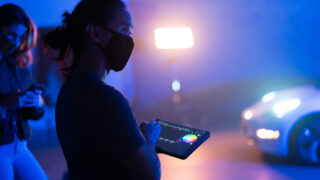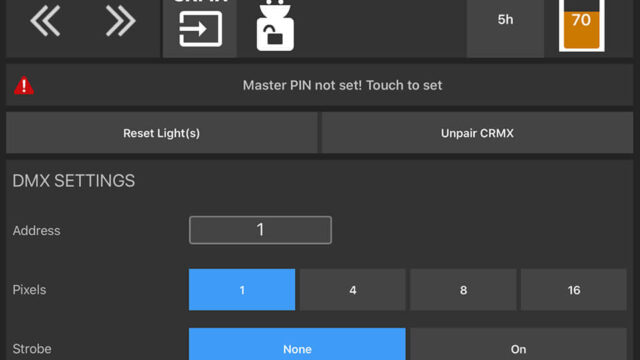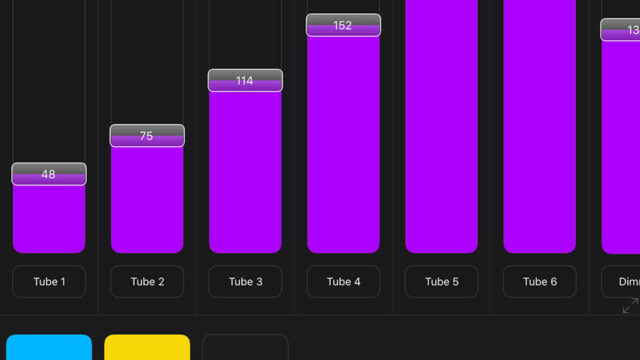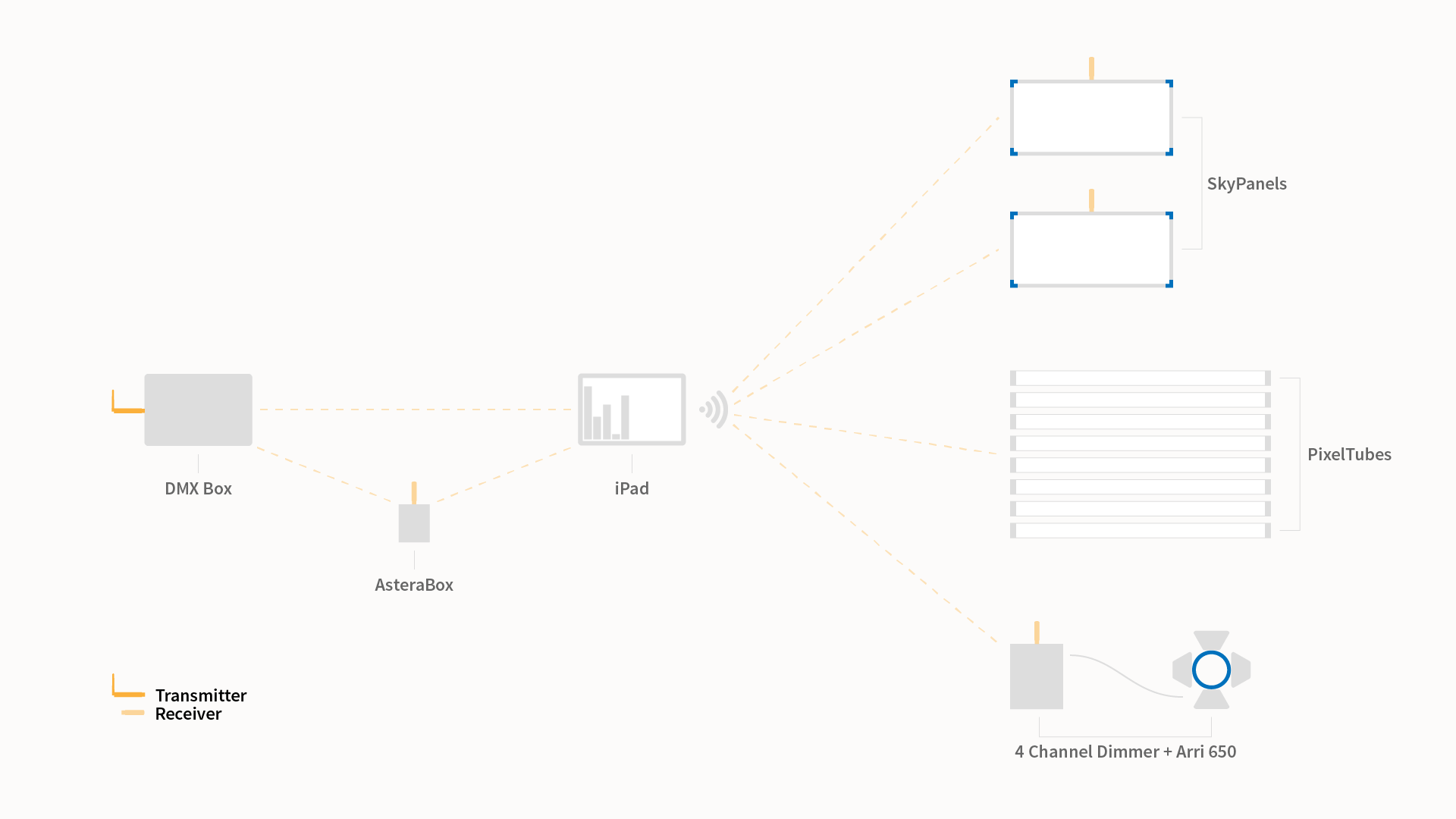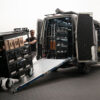There’s something super fun having full control over all the lights at the tip of your fingers. But it can be expensive to own or rent all the equipment needed. With the evolution of LED fixtures, unlocking DMX control is easier than ever. Apps like Luminair 3 offer you an affordable and portable wireless DMX dimming system using an iPad or iPhone.
For a recent project with Up to Us, we controlled Arri SkyPanels, Astera PixelTubes, and a tungsten Arri 650 via Luminair 3. So how does this ecosystem work? It all begins with the brain; a case that houses a wireless router and a DMX node. This creates a WiFi network that allows for communication between the app and the lights.
What’s in the box?
The wireless router recommended by Luminair 3 is an Apple Airport Express. Also, Art-Net is a protocol that the chosen DMX node must support; we chose the Enttec ODE MK2. These two pieces of hardware can be left loose, but it’s way cooler to customize a Pelican 1450 case.
Check it out! We drilled 2 holes to accommodate an Edison male flange outlet and a 5-pin female DMX chassis mount; each cable was cut to length and rewired to the respective receptacle. It’s clean, it’s secure, and it provides a little bit of storage to carry small incidental gear.
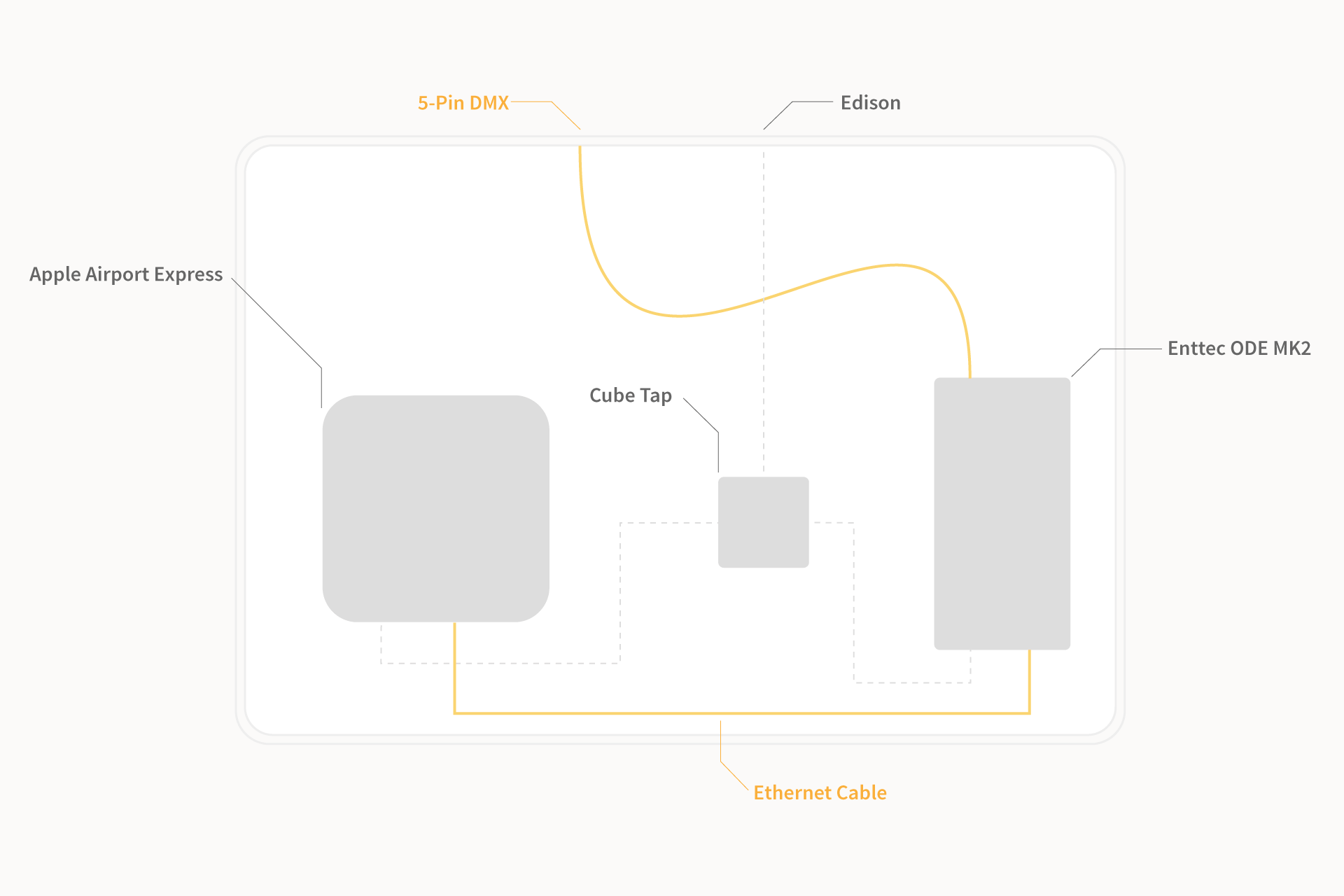
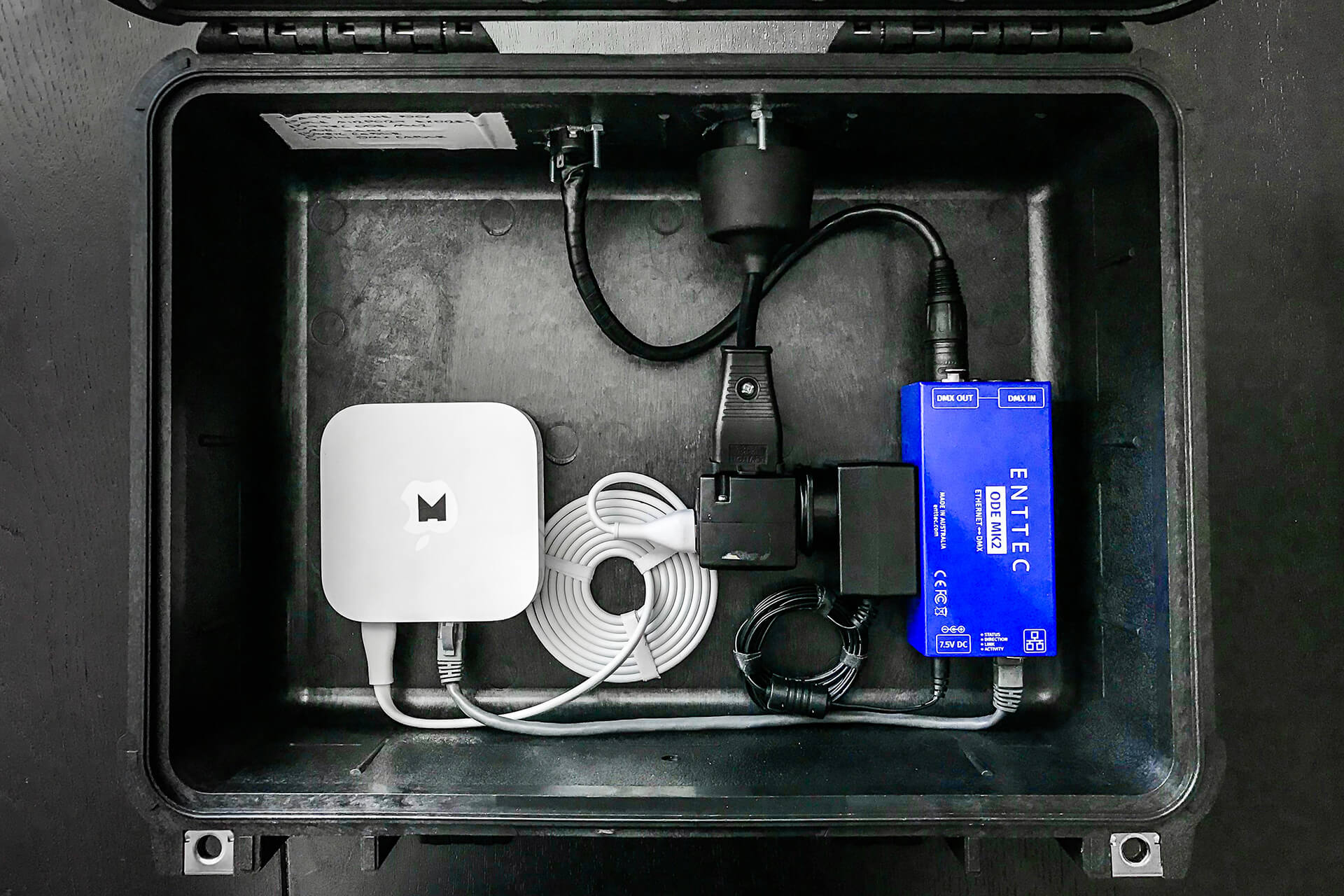
Astera LED Tubes make great lightsabers
There are 3 ways to control Astera PixelTubes: via the remote, via the Astera app, or via Luminair 3. Each of these options offers great benefits that fit your need. The Astera app is by far the most powerful tool but for our application, we wanted to control the tubes via Luminair 3. We employed the AsteraBox. Once connected with the DMX adapter, it transmits a signal via LumenRadio CRMX technology.
PixelTubes need to be configured with the Astera App. We set each fixture to CRMX mode, assigned a DMX address, and set it to 1 pixel. Luminair 3 offers various Pixeltube profiles but it’s limiting when it comes to effects and we find that solid color basic effects work best.
Look Ma, No DMX Cables
The more lights you daisy chain together, the more cable you need and the more of a mess you’ll make. Fortunately, technology is wonderful and wireless DMX transmitters and receivers offer a solution. However, this hardware is expensive. The Arri SkyLink system and other professional brands cost thousands of dollars for a kit. A cost-effective approach is to use wireless transmitters and receivers meant for DJ setups. Use a 3-to-5 pin adapter and you’re ready to go wireless. Our setup used this Donner kit that includes 1 transmitter and 7 receivers.
The diagram below illustrates the chain of command for the Up to Us project. We plugged the transmitter into our wireless DMX box. The AsteraBox, SkyPanels, and a Leviton DDS 6000+ dimmer all had the receivers.
Build Your Wireless DMX Box
We’ve listed the essential pieces of gear you’ll need to build out the box and get started.
Luminair 3 – $99.99
Apple Airport Express – $219
Enttec ODE MK2 – $261
Pelican 1450 case – $128.95
Edison male flange outlet – $18.97
5-pin female DMX chassis mount – $13.75
Cat 5 Cable – $7.99
